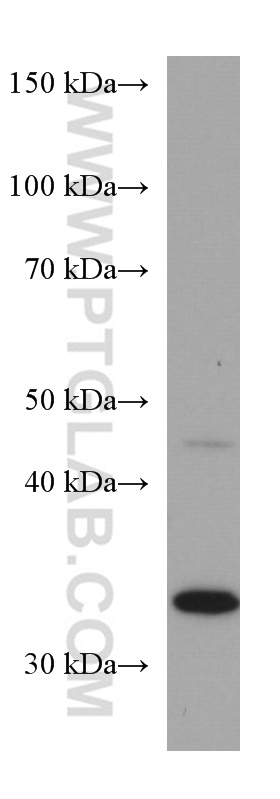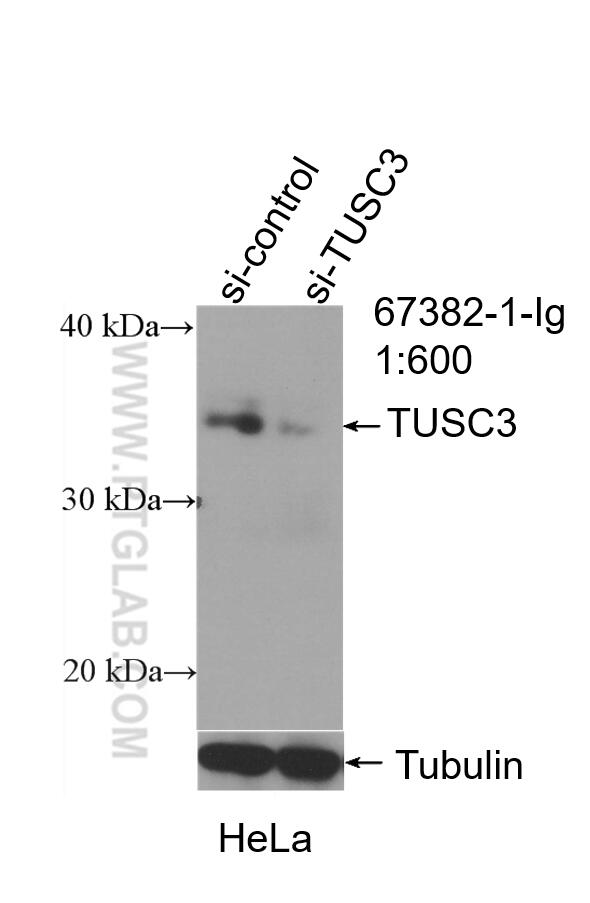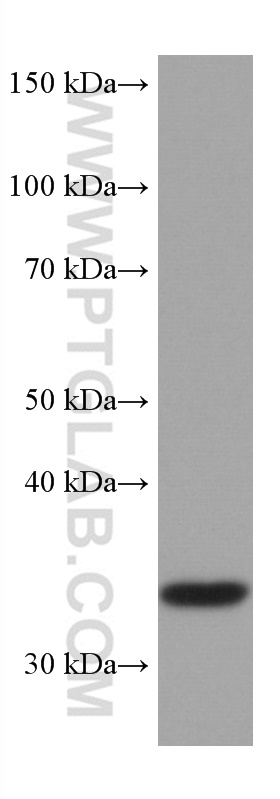验证数据展示
经过测试的应用
| Positive WB detected in | HeLa cells, human placenta tissue |
推荐稀释比
| 应用 | 推荐稀释比 |
|---|---|
| Western Blot (WB) | WB : 1:1000-1:6000 |
| It is recommended that this reagent should be titrated in each testing system to obtain optimal results. | |
| Sample-dependent, Check data in validation data gallery. | |
产品信息
67382-1-Ig targets TUSC3 in WB, ELISA applications and shows reactivity with Human samples.
| 经测试应用 | WB, ELISA Application Description |
| 经测试反应性 | Human |
| 免疫原 |
CatNo: Ag9197 Product name: Recombinant human TUSC3 protein Source: e coli.-derived, PET28a Tag: 6*His Domain: 45-199 aa of BC010370 Sequence: KENLLAEKVEQLMEWSSRRSIFRMNGDKFRKFIKAPPRNYSMIVMFTALQPQRQCSVCRQANEEYQILANSWRYSSAFCNKLFFSMVDYDEGTDVFQQLNMNSAPTFMHFPPKGRPKRADTFDLQRIGFAAEQLAKWIADRTDVHIRVFRPPNYS 种属同源性预测 |
| 宿主/亚型 | Mouse / IgG1 |
| 抗体类别 | Monoclonal |
| 产品类型 | Antibody |
| 全称 | tumor suppressor candidate 3 |
| 别名 | D8S1992, M33, MRT7, N33, OST3A, Protein N33, tumor suppressor candidate 3, TUSC3 |
| 计算分子量 | 347 aa, 40 kDa |
| 观测分子量 | 35 kDa |
| GenBank蛋白编号 | BC010370 |
| 基因名称 | TUSC3 |
| Gene ID (NCBI) | 7991 |
| RRID | AB_2882629 |
| 偶联类型 | Unconjugated |
| 形式 | Liquid |
| 纯化方式 | Protein G purification |
| UNIPROT ID | Q13454 |
| 储存缓冲液 | PBS with 0.02% sodium azide and 50% glycerol, pH 7.3. |
| 储存条件 | Store at -20°C. Aliquoting is unnecessary for -20oC storage. |
背景介绍
TUSC3 (tumor suppressor candidate 3), originally named N33, is a potential tumor supressor gene. Decreased expression of TUSC3 has been found in various cancers, including prostate cancer, pancreas cancer and ovary cancer. TUSC3 also known as OST3A, is identified as a part of the oligosaccharyl-transferase (OST) complex and plays a crucial role in protein N-glycosylation. TUSC3 mutations have been found in families with non-syndromic autosomal recessive mental retardation.
实验方案
| Product Specific Protocols | |
|---|---|
| WB protocol for TUSC3 antibody 67382-1-Ig | Download protocol |
| Standard Protocols | |
|---|---|
| Click here to view our Standard Protocols |




